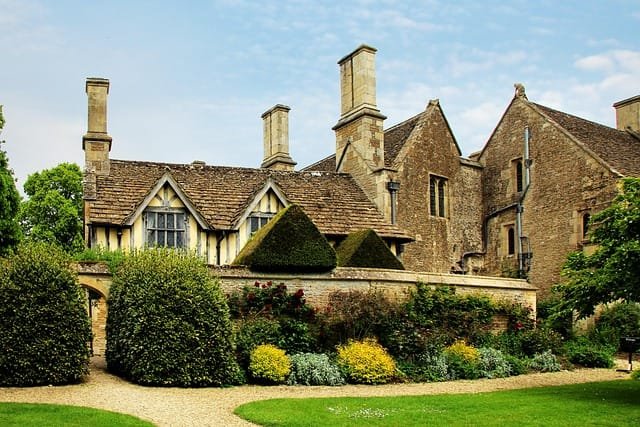You’re ready to transform your outdoor space into your personal oasis. A unique and inviting garden not only adds to your home’s aesthetic appeal but also serves as a tranquil retreat. This guide will navigate you through essential steps and creative ideas to design a garden that’s not just beautiful but also reflects your personality and style. Let’s get started on your gardening journey!

Incorporate Hardscaping Features
Incorporating hardscaping features is a great way to add structure, functionality, and visual interest to your garden. It refers to the non-living elements of the landscape, like pathways, patios, fountains, and retaining walls. They act as the backbone of the garden, providing a sense of organization and guiding movement through the space. For instance, a stone pathway can lead visitors on a journey through your garden, allowing them to discover different plantings and focal points.
Retaining walls can help manage sloped areas while also providing additional seating or display space. Water features, such as fountains or ponds, not only add a soothing ambiance but also attract beneficial wildlife. Make sure to research different styles of bird bath fountains, amongst other water features, to see which one fits your outdoor area best. By thoughtfully incorporating these elements, you can create a garden that’s much more than just an array of plants — it becomes an inviting, interactive environment that showcases your unique style.
Define a Style
Defining your garden style is a significant step in creating a unique and inviting outdoor space. It helps to establish a coherent aesthetic, uniting all elements in a harmonious design and making your garden truly feel like an extension of your home. Whether it’s English, Mediterranean, or modern minimalist, your chosen style sets the tone and influences decisions on plant selection, color schemes, material choices, and layout.
The style can reflect your tastes and interests, making the space truly yours. By consciously selecting a style, you’re not just creating a garden – you’re crafting a personalized sanctuary that tells a story — your story. This ultimately makes the garden not just visually appealing, but emotionally inviting, encouraging relaxation and enjoyment in the great outdoors.
Analyze Your Space
A detailed space analysis is going to help you tremendously in figuring out what to do with your outdoor area. Here are some key things you should focus on:
- Size and shape
- Sunlight exposure
- Soil quality
- Existing features
- Views and sightlines
- Wind and airflow
- Water source and drainage
- Local climate and microclimates
- Wildlife and pests
- Accessibility
- Privacy and security
- Historical and cultural context
Undertaking a thorough space assessment allows you to gain a comprehensive understanding of the garden’s characteristics and potential constraints. By identifying factors like sunlight exposure, soil quality, and existing features, you can make informed decisions on plant selection and layout that harmonize with the natural environment.
Understanding your garden’s size and shape can help tailor designs to the available space, ensuring optimal use and movement flow. Moreover, accounting for local climate and wildlife can guide sustainable practices, enhancing the garden’s ecological value. Ultimately, a well-conducted space assessment enables the creation of a garden that is both visually pleasing and functionally effective.
Create a Layout and Design Plan
A good garden layout brings your imagined garden space to life in a coherent, visual diagram that outlines visual elements, outdoor features, and plant placements. A well-crafted design plan ensures efficient use of space, creating a harmonious balance between different garden elements, and facilitating smooth navigation through the space. By playing with shapes, lines, and perspectives, you can create a garden that has depth, intrigue, and a sense of journey.
Likewise, plotting your design ahead of time allows you to foresee potential challenges and make necessary adjustments. This could save you time and resources in the future, ensuring your garden remains a source of joy rather than anxiety. In essence, a layout and design plan is your roadmap, guiding you towards your dream garden.
Determine Areas
Creating areas involves identifying and segmenting your garden into distinct zones based on their intended function or characteristics. For example, you may have areas for dining, relaxation, play, or cultivation. This process helps to optimize the functionality and flow of your garden, ensuring each space serves a purpose and contributes to the overall aesthetic.
Moreover, it aids in making strategic decisions about plant placement, hardscaping, and feature installations. By effectively determining areas, you can create a garden that is well-organized, easy to navigate, and packed with visual interest, making it a unique and inviting space for both relaxation and entertainment.
Choose Plants Wisely
Your plant selection should not only align with your garden’s style but also thrive in your garden’s specific conditions such as sunlight exposure and soil quality. Each plant comes with its texture, color, and growth habits, thereby adding distinct characteristics and visual appeal to your garden.
Strategically placing plants can create a sense of depth and intrigue, guiding the visitor’s eye throughout the space. Incorporating a diverse mix of trees, shrubs, and flowers attracts beneficial wildlife, adding life and movement to your garden. Finally, remember that your chosen plants can evoke certain moods or feelings, making your garden a truly personal and inviting space.
Consider Functionality
Functionality is a key aspect of designing an inviting garden. This involves thinking about how the space will be used and who will be using it. An area dedicated to entertaining might need a patio or deck, while a play area for kids requires open space. For those who love gardening, consider an area for composting or cultivation. Functional design is about creating a garden that caters to the needs and lifestyles of those who use it.
Additionally, functional elements like seating, pathways, and lighting can add aesthetic value, making the garden not only practical but also visually appealing. In essence, a focus on functionality ensures that your garden is not just a showpiece, but a livable space that enhances your home life.

So, now it’s your turn. Grab your gardening gloves and start planning! With the right balance of style, functionality, and careful consideration of your outdoor space’s unique characteristics, you can create a garden that is truly your own. Remember, a successful garden design reflects your style while also catering to your needs. Enjoy the journey and look forward to the stunning, inviting garden you’ll create!


